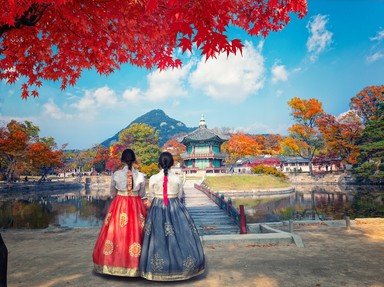Quiz Answer Key and Fun Facts
1. The Korean Peninsula is bordered to the north by which two large countries?
2. Which landlocked Asian country is similar in size to the Korean peninsula?
3. The Korean Peninsula by definition is surrounded by water on three sides. Which one of the following bodies of water does *NOT* reach the Korean Peninsula's shoreline?
4. Mount Paektu, the Korean Peninsula's highest mountain, is an active stratovolcano whose eruption in the 10th century AD was one of the most violent recorded in the past 5,000 years.
5. Part of the Korean Peninsula, what geographical features are Jin-do, Geoje-do and Jeju-do?
6. The Han River on the Korean Peninsula is only the fourth-longest, but it used to be the most important. Why?
7. The Florida peninsula in the US is similar in size to the Korean Peninsula. However, unlike Florida which is very flat, the Korean peninsula is quite mountainous. Where are the mountains in Korea?
8. Regarding land use, both North and South Korea have similar areas and similar percentages of arable land - yet food and commodity production are dissimilar. Which of the following statements is true?
9. Which of the following best describes the climate of the Korean Peninsula?
10. Much of Korea's once abundant wildlife is now concentrated in the northern part of the peninsula, which harbours a number of endangered species. Which iconic animal, a powerful symbol in Korean culture, may still be found in North Korea?
Source: Author
LadyNym
This quiz was reviewed by FunTrivia editor
agony before going online.
Any errors found in FunTrivia content are routinely corrected through our feedback system.
